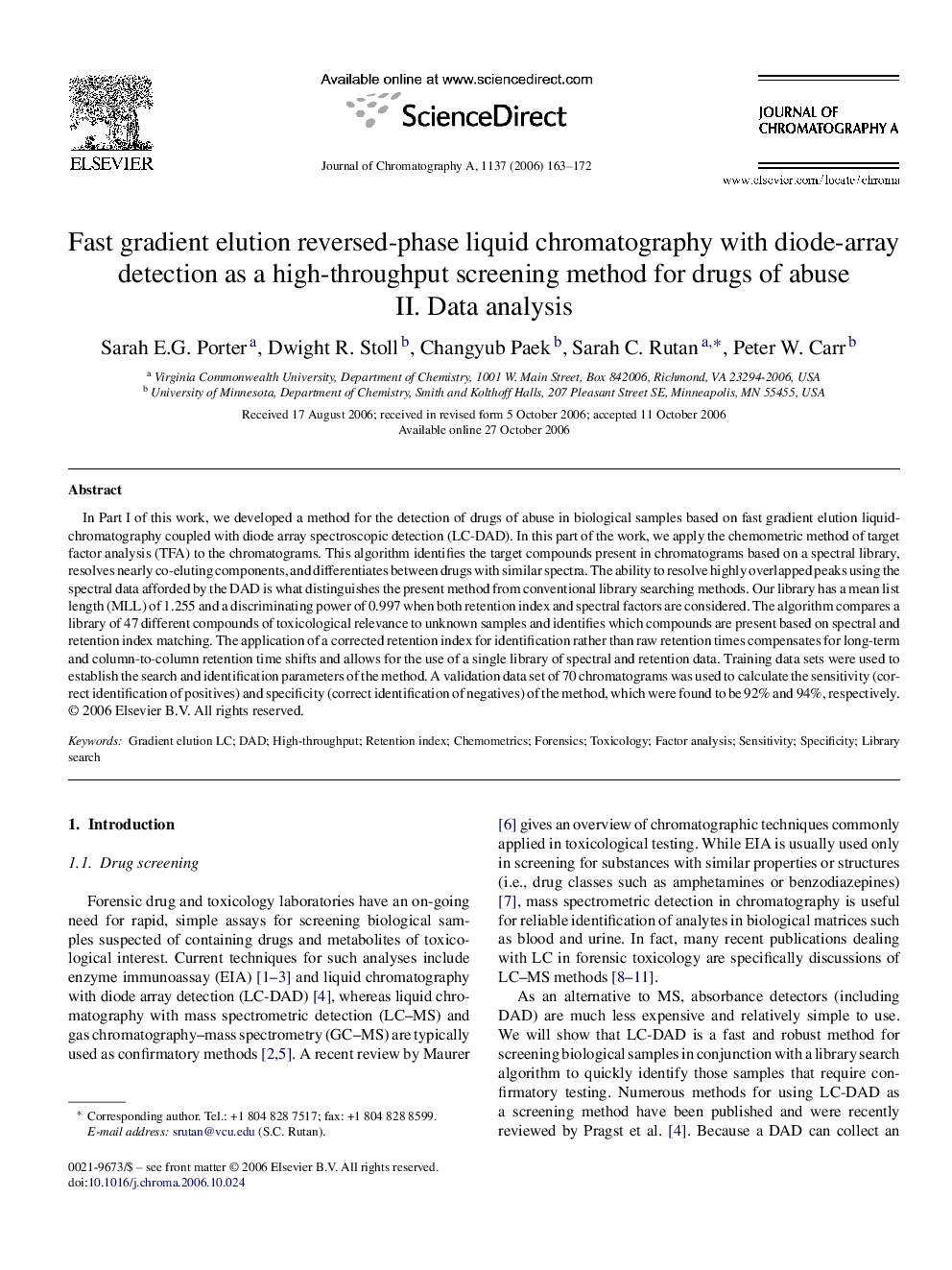| کد مقاله | کد نشریه | سال انتشار | مقاله انگلیسی | نسخه تمام متن |
|---|---|---|---|---|
| 1208345 | 965302 | 2006 | 10 صفحه PDF | دانلود رایگان |

In Part I of this work, we developed a method for the detection of drugs of abuse in biological samples based on fast gradient elution liquid-chromatography coupled with diode array spectroscopic detection (LC-DAD). In this part of the work, we apply the chemometric method of target factor analysis (TFA) to the chromatograms. This algorithm identifies the target compounds present in chromatograms based on a spectral library, resolves nearly co-eluting components, and differentiates between drugs with similar spectra. The ability to resolve highly overlapped peaks using the spectral data afforded by the DAD is what distinguishes the present method from conventional library searching methods. Our library has a mean list length (MLL) of 1.255 and a discriminating power of 0.997 when both retention index and spectral factors are considered. The algorithm compares a library of 47 different compounds of toxicological relevance to unknown samples and identifies which compounds are present based on spectral and retention index matching. The application of a corrected retention index for identification rather than raw retention times compensates for long-term and column-to-column retention time shifts and allows for the use of a single library of spectral and retention data. Training data sets were used to establish the search and identification parameters of the method. A validation data set of 70 chromatograms was used to calculate the sensitivity (correct identification of positives) and specificity (correct identification of negatives) of the method, which were found to be 92% and 94%, respectively.
Journal: Journal of Chromatography A - Volume 1137, Issue 2, 29 December 2006, Pages 163–172